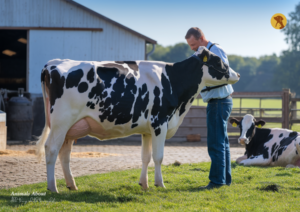For animal lovers, pets are more than just companions, they’re family. Their wagging tails, playful antics, and cozy cuddles bring joy to every day. But for some, these furry friends come with an unwelcome side effect: pet allergies. If you’re wondering how to handle pet allergies without giving up your beloved pets, you’re not alone.
Sneezing, itchy eyes, or even asthma flare-ups can make it tough to enjoy time with your pet. The good news? With a few practical, pet-friendly strategies, you can reduce allergens and create a healthier, allergy-safe home. In this guide, we’ll explore simple ways to minimize allergy triggers and enjoy life with your furry friend comfortably and symptom-free.
Why Pet Allergies Happen and How to Handle Pet Allergies
Pet allergies are triggered by proteins found in pet dander (tiny flakes of skin), saliva, and urine. These allergens are sneaky—they’re lightweight, sticky, and can linger in your home for months, clinging to furniture, carpets, and even your clothes. When you breathe them in or touch them, your immune system may overreact, leading to symptoms like itchy eyes and sneezing, a runny nose, or wheezing. For some, pet allergies can also worsen asthma and pets, making it critical to manage exposure.
If you suspect you’re allergic to your pet, allergy testing is a great first step. An allergist can pinpoint whether your symptoms are caused by pet dander or other culprits like dust mites or pollen. Understanding your triggers empowers you to take control and start dealing with pet allergy symptoms effectively. Plus, if you have asthma, a doctor can help you create a plan to stay comfortable around your pet.
The goal isn’t to part with your pet but to handle pet allergies in a way that lets you keep the love and joy of pet ownership. With the right strategies, you can reduce allergens and create a healthier home environment for everyone.
Top Strategies for Reducing Pet Allergens
To handle pet allergies, focus on reducing pet allergens and minimizing allergy triggers from pets. These practical steps are designed to work in a pet-friendly home, so you don’t have to compromise on your bond with your furry friend.
1. Master the Art of Cleaning to Control Pet Dander
Cleaning is your secret weapon for controlling pet dander. Regular upkeep can drastically reduce allergens in your home, making it easier to breathe and enjoy your space. Here’s how to do it right:
- Invest in a vacuum with a HEPA filter: A high-efficiency particulate air (HEPA) filter traps tiny particles like pet dander and dust mites, preventing them from circulating back into the air. Vacuum carpets, rugs, and upholstery at least twice a week, paying extra attention to areas where your pet lounges.
- Wash pet bedding and toys regularly: Use hot water (at least 140°F) to kill allergens on your pet’s bedding, blankets, and soft toys. Aim to wash these weekly to keep dander at bay.
- Wipe down surfaces with a damp cloth: Dry dusting can stir up allergens, so use a damp cloth to capture pet dander on hard surfaces like floors, countertops, and furniture. This simple trick is one of the best cleaning tips for pet owners.
By staying consistent with these habits, you’ll improve indoor air quality and reduce allergic reactions, creating a more comfortable home for you and your pet.
2. Prioritize Pet Grooming to Reduce Dander
Pet grooming is a powerful way to handle pet allergies. Regular brushing and bathing can significantly cut down on loose fur and dander, keeping your home cleaner. Here’s how to make grooming work for you:
- Brush your pet regularly: Brush your pet outside or in a well-ventilated area to prevent dander from spreading indoors. Aim for at least once or twice a week, depending on your pet’s coat.
- Bathe your pet every one to two weeks: Use a pet-safe shampoo recommended by your veterinarian to clean your pet’s skin and fur. Bathing reduces the amount of dander and saliva that can trigger allergies.
- Consider professional grooming: If grooming at home triggers your symptoms, a professional groomer can take over. They can also trim your pet’s fur to minimize shedding.
If your allergies flare up during grooming, wear a mask or ask a family member to help. For those considering a new pet, hypoallergenic pets like poodles, schnauzers, or hairless breeds may produce less dander, though no pet is entirely allergen-free. Always spend time with a breed before adopting to see how your body reacts.
3. Use Air Purifiers to Boost Indoor Air Quality
An air purifier with a HEPA filter is a game-changer for allergy-proofing your home. These devices capture pet dander, dust, and other allergens, keeping the air cleaner and easier to breathe. Place air purifiers in high-traffic areas, like the living room or bedroom, and run them daily for maximum impact. Some models are designed specifically for pet owners, with extra filtration for dander and odors.
For the best results, combine air purifiers with good ventilation. Open windows when weather permits to let fresh air circulate and reduce indoor allergens. These steps will help you create an allergy-safe home without sacrificing your pet’s freedom to roam.
4. Establish Pet-Free Zones
One of the simplest ways to handle pet allergies is to create pet-free zones in your home. The bedroom is a great place to start, as you spend hours sleeping there, and reducing allergens in this space can improve your rest. Here’s how to make it work:
- Keep pets out of the bedroom: Train your pet to stay out of your sleeping area. Use a baby gate or close the door to reinforce boundaries.
- Use hypoallergenic bedding: Invest in a hypoallergenic mattress cover and pillowcases to block allergens. Wash your bedding weekly in hot water to keep it dander-free.
- Add an air purifier: A small air purifier in your bedroom can further reduce allergens, ensuring a restful, sneeze-free night.
This strategy gives your body a break from allergens, helping you manage symptoms more effectively.
5. Manage Symptoms with Allergy Medication
Sometimes, environmental changes alone aren’t enough to fully handle pet allergies. Over-the-counter allergy medication, like antihistamines or nasal sprays, can provide quick relief for itchy eyes and sneezing. For more severe symptoms, consult your doctor about prescription medications or allergy shots (immunotherapy), which can desensitize you to pet allergens over time.
If your pet needs medication or special shampoos to reduce dander, follow your veterinarian’s advice closely. Combining medical solutions with home adjustments can make a big difference in dealing with pet allergy symptoms.
Long-Term Solutions for Allergy-Proofing Your Home
To keep pet allergies under control for the long haul, consider making some permanent changes to your home environment. These tweaks can further reduce pet allergens and create a healthier space:
- Switch to hard flooring: Carpets trap pet dander and are harder to clean than hardwood, tile, or vinyl floors. If replacing carpets isn’t an option, vacuum frequently and consider professional carpet cleaning every few months.
- Choose washable window treatments: Heavy drapes can harbor allergens, so opt for washable curtains or blinds that are easy to clean.
- Upgrade your HVAC system: A high-quality furnace filter or a whole-house air purifier can reduce allergens throughout your home. Change filters regularly to maintain efficiency.
These changes may require an upfront investment, but they’ll pay off by minimizing allergy triggers from pets and improving your quality of life.
When to Seek Professional Help
If you’ve tried these pet allergy relief tips and still struggle with symptoms, it’s time to seek professional help. An allergist can recommend advanced treatments, like immunotherapy, to reduce your sensitivity to pet allergens. If you have asthma, a doctor can create a plan to manage asthma and pets, ensuring you stay healthy around your furry friend.
Don’t overlook your veterinarian as a resource. They can suggest shampoos, supplements, or dietary changes that may reduce your pet’s dander production. Working with both medical and veterinary professionals ensures a comprehensive approach to handling pet allergies.
Bonus Tips for Pet Owners with Allergies
Here are a few extra cleaning tips for pet owners to keep allergens in check:
- Wash your hands after petting: This prevents allergens from spreading to your face or eyes.
- Change clothes after playtime: If you’ve been rolling around with your pet, change into fresh clothes to avoid carrying dander around.
- Use a lint roller: Keep a lint roller handy to remove pet hair and dander from your clothes or furniture.
These small habits add up, helping you create an allergy-safe home without disrupting your pet’s routine.
Living Happily with Your Pet, Allergy-Free
Being an animal lover with pet allergies doesn’t mean you have to give up your furry friend. By taking steps to handle pet allergies, you can enjoy all the love, laughter, and cuddles your pet brings without the sneezes or wheezes. From controlling pet dander with grooming and cleaning to allergy-proofing your home with air purifiers and pet-free zones, these strategies are practical and pet-friendly. Start with one or two changes, stay consistent, and build a routine that works for you and your pet.
What’s your favorite way to handle pet allergies? Have a tip for reducing pet allergens that’s worked wonders in your home? Share your thoughts, and let’s keep the conversation going in the comments!







